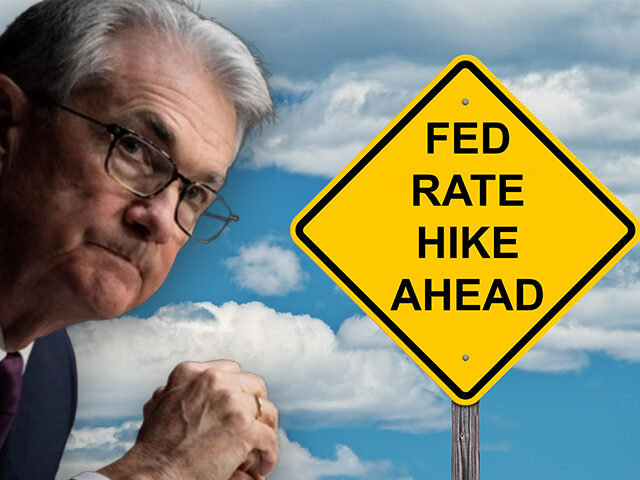GDP Was Weaker Than Expected But Inflation Got Worse
There was nothing in the Commerce Department’s report on first-quarter gross domestic product that should give the Federal Reserve a reason to hold back on raising interest rates.
The economy grew at an annualized rate of 1.1 percent, the Commerce Department’s Bureau of Economic Analysis said on Thursday. This was officially a “miss” because economists had forecast a two percent growth rate in the first quarter. And it was a slowdown for the economy after the 2.6 percent growth rate in the fourth quarter of last year.
The headline figure, however, does not tell the full story. Personal consumption expenditures rose by 3.7 percent, the fastest rate of growth in nearly two years. Consumers spent more on both goods and services, undermining the widespread economic thesis that goods spending would retreat in the first quarter.
Even more striking, underlying inflation accelerated. The personal consumption expenditures (PCE) price index rose at 4.2 percent annualized pace in the January to March period, up from 3.7 percent in the final three months of last year. Core PCE inflation jumped 4.9 percent, much more than forecast and the fastest rate of quarterly inflation in a year. In the fourth quarter of last year, core PCE inflation ran at 4.4 percent.
We Shopped and Didn’t Drop
The demand for goods was expected to continue to ebb following the tremendous pandemic buying spree. After declining for four consecutive quarters, the start of 2023 saw a huge surge in goods spending. Overall spending on goods rose at an annual rate of 6.5 percent. Spending on durable goods jumped to an annual growth rate of 16.9 percent, a huge swing after three quarters of declines.
Final sales of domestic product, a metric many economists look to as an indicator of the health of the U.S. economy, rose at a 7.6 percent rate. Final sales to domestic purchasers, arguably the most important segment of the GDP report, rose 7.1 percent.
It’s likely sales would have been even higher if consumers had more to purchase. If anything, it was the expectation on the part of businesses of a downturn in demand that held back the economy in the first three months of the year. A decline in inventories subtracted 2.26 percentage points from GDP during the period. Given the strength of consumer spending, that’s likely to reverse in the second quarter, which could mean the economy will accelerate.
Residential investment was a drag on growth for an eighth straight quarter. But, as we have been pointing out, the housing market is now strengthening. So, this is likely to also become a contributor to growth in the second quarter.
From the perspective of the Federal Reserve, the first quarter GDP report provides no evidence of relief from inflation. If anything, it is a stagflationary report. Businesses produced fewer goods, as evidenced by inventories, while consumers purchased more. That’s the opposite outcome the Fed was looking to achieve.
Businesses Were Worried
There’s plenty of evidence that businesses came into the year very worried about a downturn. Spending on equipment fell 7.3 percent, the second consecutive decline. After a big jump in the fourth quarter of last year, private inventories fell by $1.6 billion in the first quarter of this year. Some of that was no doubt planned, but a big part likely resulted from consumers just buying more than expected.
How long will that last? Many big companies have been raising their earnings guidance and are likely to ramp up inventory investment in reaction to the stronger-than-expected consumer demand. This could offset declines in more interest rate-sensitive parts of the economy.
Fed Hike Coming
The GDP report was the penultimate slice of significant data we will get before next week’s meeting of the Federal Open Market Committee. The final piece will come tomorrow, when the Commerce Department reports the March numbers for the personal consumption expenditure price index. Absent an unlikely deflationary crash in prices, there’s nothing in the pipeline that is going to throw the Fed off its plan for at least one more interest rate hike. A quarter-point hike is locked in now.

COMMENTS
Please let us know if you're having issues with commenting.